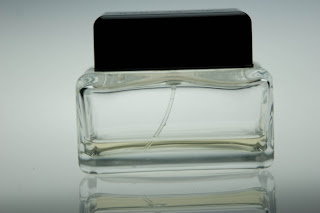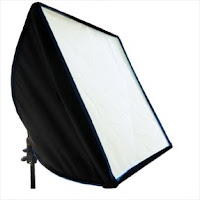This evening I attended a workshop led by my course leader, John Harrison, to familiarize myself on how to take pictures using a medium format camera and then to be able to develop the film that I had used.
In the studio John had already set up the Cambo 4x5 monorail large format camera, a image of this type of camera is shown below;
 The Cambo 4x5 is used mainly for close up studio work. It is fitted with bag bellows for a wide angle and it has an extensive range of movements. If all three planes, that is the subject plane, the lens plane and the film plane are precisely parallel to each other then a focussed image will appear sharp across the entire image area . If we tilt or swing the 5x4 camera this will alter the depth of focus (depth of field). For a more detailed explanation of the Scheimpflug Principle please see http://en.wikipedia.org/wiki/Scheimpflug_principle
The Cambo 4x5 is used mainly for close up studio work. It is fitted with bag bellows for a wide angle and it has an extensive range of movements. If all three planes, that is the subject plane, the lens plane and the film plane are precisely parallel to each other then a focussed image will appear sharp across the entire image area . If we tilt or swing the 5x4 camera this will alter the depth of focus (depth of field). For a more detailed explanation of the Scheimpflug Principle please see http://en.wikipedia.org/wiki/Scheimpflug_principle
After taking a light metering of our object, a coke bottle which was positioned on a white opaque table, bottom lit by a soft box beneath, it stated to set the camera to F5.6 at 1/2 second shutter speed however knowing that it is advisable to compensate exposure for the loss of light from the lens to the film plane due to the length of the bellows extension, I set the camera at F5.6 at 1 second.
Now time for the red light district (sorry couldn't resist - lol) into the darkroom we went to load our film. The film we used was Hilford Ortho Chromatic ISO 80 Black and White Film and the reason we were able to load this film under red light was due to this film being sensitive to all colours of light . . . APART FROM RED!
John also mentioned that there was another type of black and white film by Ilford which is called Ilford Pan Chromatic however as this universal film is sensitive to all colours of light he felt that allowing us to load our film in complete darkness, at this early stage, would have been a little cruel. Hmm can't wait for the laughs trying to load this type of film in complete darkness!
After successfully loading our films carefully into the dark slide film holder we where ready to take our photographs, however first things first before emerging back to the studio with our loaded film, John explained the layout of the darkroom to us all and advised us on how to process our films on our return. (See below) As our technitian had already mixed up the necessary chemicals please disregard the information advising how to dilute the 'stock - developer' as this will be attempted by myself at a later date if unfortunately our lovely techician Kevin Howlett is not about the photographic floor;
1. Add to the developer, the left hand side tank ( use 300ml per film )
Stock undiluted - Ilford ID11 - 8 minutes
Stock diluted at 1:1 - Ilford ID11 - 13 minutes - As Kevin had already diluted to this ratio we where advised to develop our negative for this length of time
Another common dilution is 1:3 - 20 minutes
Agitate the tank continuously every 30 seconds
(5 seconds every 30 seconds giving two inversions)
If the tank is under agitated or under developed it will give a low contrast
If the tank is over agitated or over developed it will give a higher contrast
2. Stop Bath - give continuous agitation for 1 minute
3. Fixer - give continuous agitation for 5 minutes
The fixer removes unexposed silver halides. It is an acid called Sodium thiosulphate
4. Wash - in a 'forced' film washer for 20 minutes
5. Photoflo - add a few drops to the final wash and immerse film
Photoflo is a wetting agent used to increase run off, therefore leaving less drying marks
6. Chamois leather - drag down the glossy side of the negative to remove any droplets
7. Dry - hang the negative in a drying cabinet for 30 minutes
Printing from our negatives is to follow in our next weeks workshop































 The Cambo 4x5 is used mainly for close up studio work. It is fitted with bag bellows for a wide angle and it has an extensive range of movements. If all three planes, that is the subject plane, the lens plane and the film plane are precisely parallel to each other then a focussed image will appear sharp across the entire image area . If we tilt or swing the 5x4 camera this will alter the depth of focus (depth of field). For a more detailed explanation of the Scheimpflug Principle please see
The Cambo 4x5 is used mainly for close up studio work. It is fitted with bag bellows for a wide angle and it has an extensive range of movements. If all three planes, that is the subject plane, the lens plane and the film plane are precisely parallel to each other then a focussed image will appear sharp across the entire image area . If we tilt or swing the 5x4 camera this will alter the depth of focus (depth of field). For a more detailed explanation of the Scheimpflug Principle please see 

































